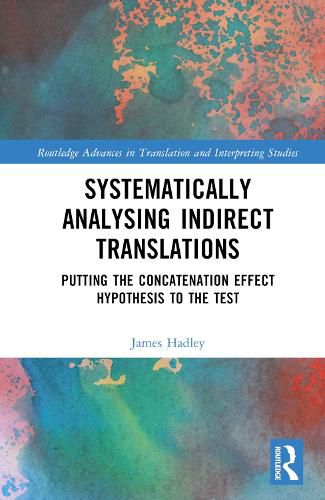Readings Newsletter
Become a Readings Member to make your shopping experience even easier.
Sign in or sign up for free!
You’re not far away from qualifying for FREE standard shipping within Australia
You’ve qualified for FREE standard shipping within Australia
The cart is loading…






This volume applies digital humanities methodologies to indirect translations in testing the concatenation effect hypothesis.
The concatenation effect hypothesis suggests that indirect translations tend to omit or alter identifiably foreign elements and also tend not to identify themselves as translations. The book begins by introducing the methodological framework to be applied in the chapters that follow and providing an overview of the hypothesis. The various chapters focus on specific aspects of the hypothesis that relate to specific linguistic, stylistic, and visual features of indirect translations. These features provide evidence that can be used to assess whether and to what extent the concatenation effect is in evidence in any given example.
The overarching aim of the book is not to demonstrate or falsify the veracity of the concatenation effect hypothesis or to give any definitive answers to the research questions posed. Rather, the aim is to pique the curiosity and provoke the creativity of students and researchers in all areas of translation studies who may never have considered indirect translation as relevant to their work.
$9.00 standard shipping within Australia
FREE standard shipping within Australia for orders over $100.00
Express & International shipping calculated at checkout
This volume applies digital humanities methodologies to indirect translations in testing the concatenation effect hypothesis.
The concatenation effect hypothesis suggests that indirect translations tend to omit or alter identifiably foreign elements and also tend not to identify themselves as translations. The book begins by introducing the methodological framework to be applied in the chapters that follow and providing an overview of the hypothesis. The various chapters focus on specific aspects of the hypothesis that relate to specific linguistic, stylistic, and visual features of indirect translations. These features provide evidence that can be used to assess whether and to what extent the concatenation effect is in evidence in any given example.
The overarching aim of the book is not to demonstrate or falsify the veracity of the concatenation effect hypothesis or to give any definitive answers to the research questions posed. Rather, the aim is to pique the curiosity and provoke the creativity of students and researchers in all areas of translation studies who may never have considered indirect translation as relevant to their work.